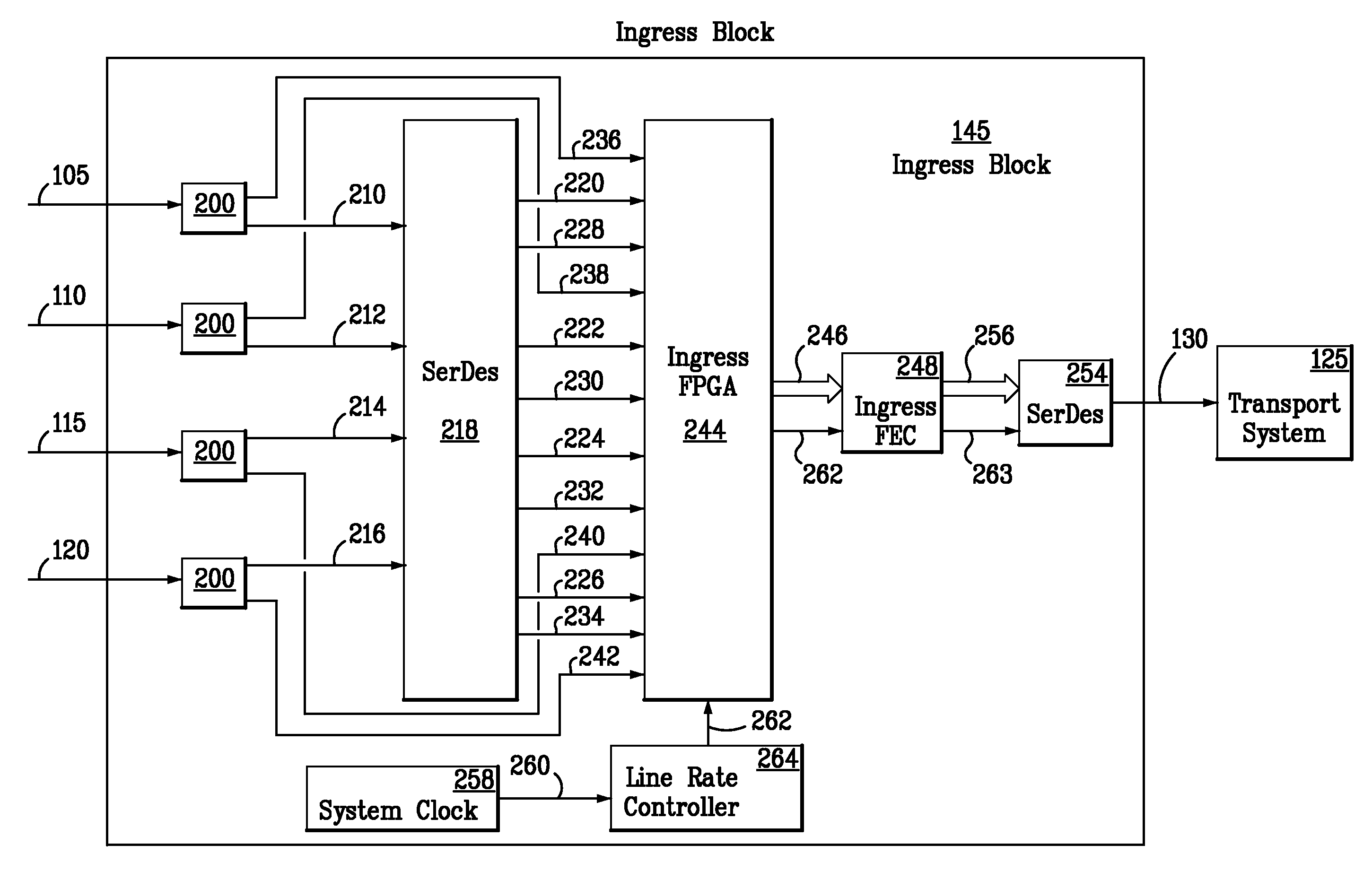Apparatus and method for aggregation and transportation of gigabit ethernet and other packet based data formats
a technology of aggregation and transportation, applied in electrical equipment, digital transmission, data switching networks, etc., can solve problems such as access failure, server access to data only on devices directly attached, and scaling difficulties of scsi standard, so as to improve the flexibility of the system, and communicate transparently
- Summary
- Abstract
- Description
- Claims
- Application Information
AI Technical Summary
Benefits of technology
Problems solved by technology
Method used
Image
Examples
Embodiment Construction
[0050]FIG. 1 shows a block diagram of the transport system for aggregation and transportation of packet-based data formats 100. System 100 is a fall duplex transport system, the circuits used for aggregation and recovery at both ends of the network are mirror images.
[0051]In the preferred embodiment, four independent 10b encoded Gigabit Ethernet data streams 105, 110, 115, and 120 are aggregated by ingress block 145 and transported across transport system 125 in a composite stream 130. Greater (up to 8) or fewer data streams may be accommodated in alternate embodiments by scaling the disclosed components. Other packet based formats such as Gigabit Fibre Channel or FICON that are at data rates of 1.0625 Gbps can be accommodated. Alternately, up to four 2 Gigabit Fibre Channel data streams that are at data rates of 2.125 Gbps can also be accommodated. At ingress block 145, there is a timing uncertainty of approximately + / 100 parts per million (ppm) from the received nominal GBE of 1.2...
PUM
 Login to View More
Login to View More Abstract
Description
Claims
Application Information
 Login to View More
Login to View More - R&D
- Intellectual Property
- Life Sciences
- Materials
- Tech Scout
- Unparalleled Data Quality
- Higher Quality Content
- 60% Fewer Hallucinations
Browse by: Latest US Patents, China's latest patents, Technical Efficacy Thesaurus, Application Domain, Technology Topic, Popular Technical Reports.
© 2025 PatSnap. All rights reserved.Legal|Privacy policy|Modern Slavery Act Transparency Statement|Sitemap|About US| Contact US: help@patsnap.com



